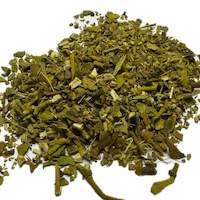MISTLETOE FOLIA BULGARIA

Prices
-
Prices do not include VAT.
Description
Mistletoe (Viscum album): The Herb of Symbiosis and Healing
Mistletoe (Viscum album), also known as European mistletoe, is a semi-parasitic plant that grows on trees such as oaks, lindens, and firs. It belongs to the Santalaceae family and has a long history of use in traditional medicine for supporting health and boosting vitality. In ancient times, it was considered a sacred plant and used for various purposes, and today, it is known for its therapeutic properties.
Properties and Benefits of Mistletoe
Antioxidant Action: Mistletoe is rich in flavonoids and other antioxidant compounds, which protect cells from damage caused by free radicals.
Blood Pressure Regulation: Mistletoe is known for its ability to lower blood pressure, making it useful for individuals with hypertension.
Cardiovascular Support: Mistletoe has been shown to support cardiovascular health by reducing the risk of cardiovascular diseases and improving blood circulation.
Pain Relief: Mistletoe has analgesic properties and can help relieve pain, especially in cases of arthritis and musculoskeletal discomfort.
Soothing for the Nervous System: It is used to relieve stress, depression, and nervous tension, promoting emotional well-being and relaxation.
Anti-inflammatory Action: Thanks to its anti-inflammatory properties, mistletoe can help fight inflammation in the body and strengthen the immune system.
Uses of Mistletoe
Infusion and Tea: Mistletoe can be used to prepare tea or infusion, which strengthens cardiovascular function and promotes calm and well-being.
Infusion for Cosmetics: Mistletoe can be used as a base for an infusion in cosmetics, helping to soothe the skin and offering anti-aging properties.
Tinctures and Extracts: Mistletoe tinctures or extracts are used to boost the immune system, fight inflammation, and provide pain relief.
Essential Oils: Mistletoe essential oils are used in aromatherapy for stress relief and enhancing mental calm.
Selected Spices and Herbs
Merkouroglou, quality spices and herbs since 1926.
Subscribe to our newsletter!

About
Contact
-
This email address is being protected from spambots. You need JavaScript enabled to view it.


